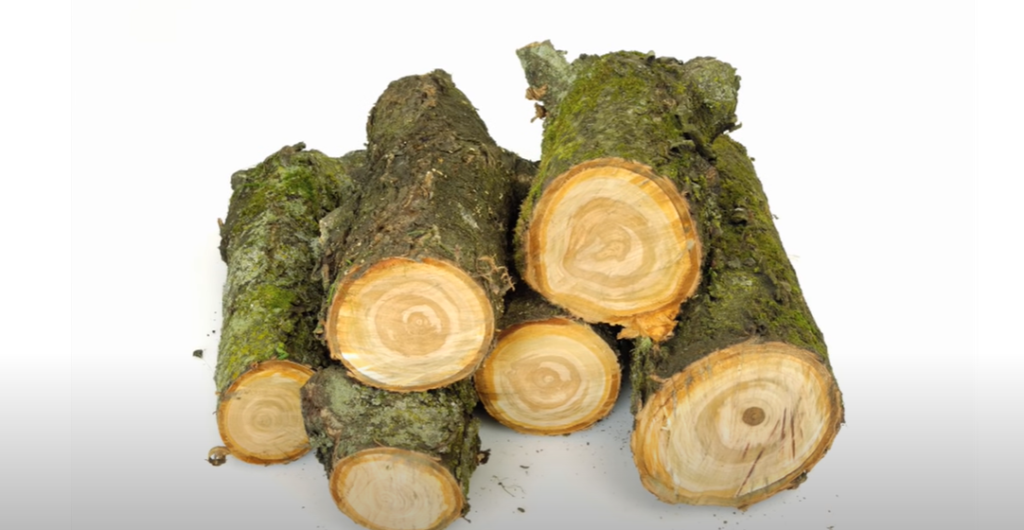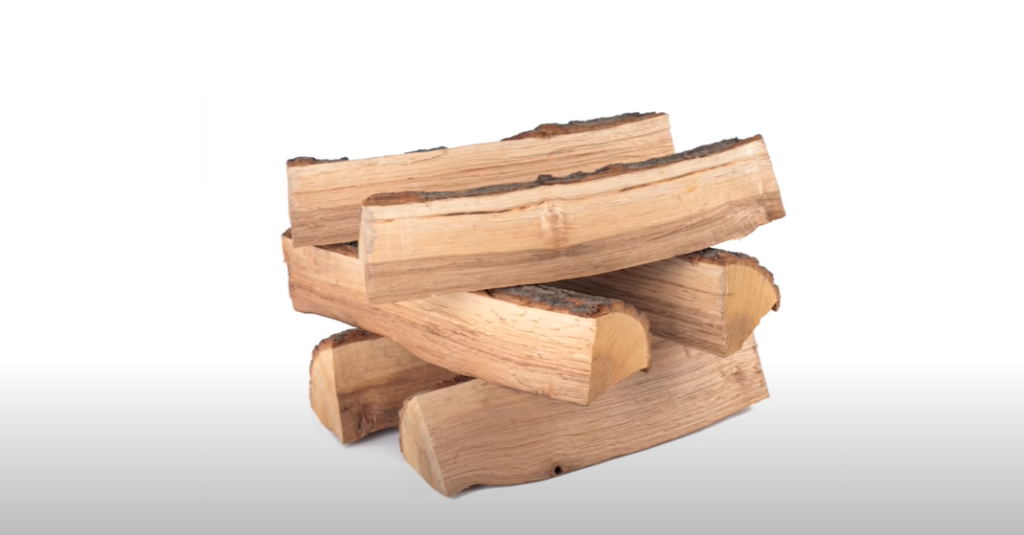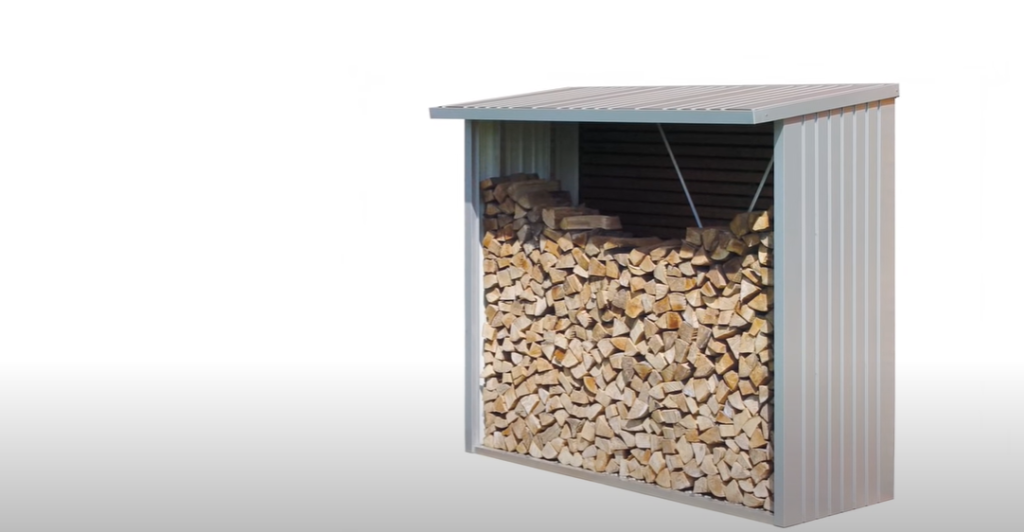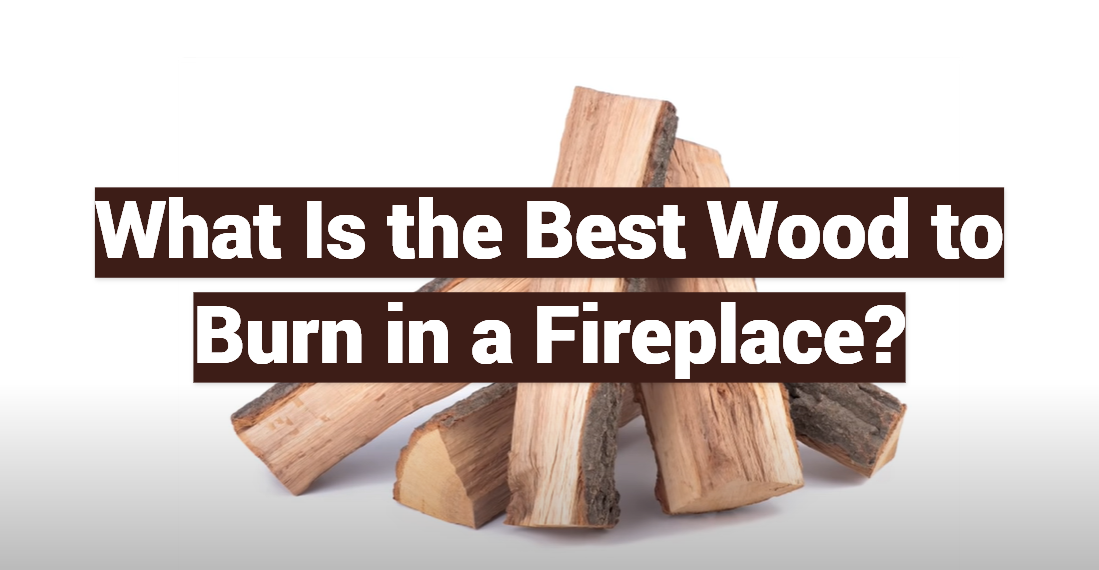When selecting firewood for your fireplace, it’s important to choose a type of wood that can provide optimal warmth and efficiency. Knowing which firewood burns the longest and hottest can be a daunting task for any homeowner. To help make sure you get it right, we’ve researched some of the most popular woods available to determine which one should be at the top of your burning material list. Come along with us as we explore our guide on the optimal types of wood to burn in a fireplace!
Comparing Firewood by Heat Energy
Hard and Soft Firewoods
When it comes to the best wood for a fireplace, one of the first considerations is heat energy. Hardwoods such as oak and maple will provide more heat energy than softer types like pine or cedar. This means that hardwood firewood will burn hotter, longer, and produce less smoke than softer woods. Another thing to consider when selecting the right type of firewood is its moisture content; wetter woods contain more water which translates into releasing more fuel vapors, creating a smoky and inefficient fire that won’t last as long.

Green Wood vs. Seasoned Wood
Green wood is freshly cut timber that has not been dried out over time, so it contains a higher moisture content than seasoned wood. The heat from the fire can’t be used efficiently to burn the wet wood; instead, most of it will end up going up the chimney in smoke form. This means more creosote buildup and pollutants entering your home, which can be hazardous for your health and safety.
Seasoned wood on the other hand has been cut and stored properly for at least six months before being burned in a fireplace, allowing any remaining water to be released from the cellular structure of the wood. This makes it much easier for your fire to burn cleanly and efficiently, releasing less smoke and pollutants throughout your home. Seasoned wood is also known for providing better heat output than unseasoned wood, making it an ideal choice for anyone looking to maximize their fireplace’s efficiency.
While both seasoned and green wood can be used in a fireplace safely, it’s always best to use seasoned wood whenever possible. The extra effort it takes to source dried out logs will pay off in the long run with increased safety and performance while enjoying your cozy fireside experience.
The Best Kinds of Wood for Indoor Fireplaces
When it comes to burning wood in an indoor fireplace, the best types of wood are hardwoods such as oak, maple and hickory. These hardwoods have a higher heat output than softwoods such as pine or fir and they also tend to last longer before they need to be replenished. Hardwood is also less likely to cause smoke or sparks that could potentially damage your home’s chimney or other components. Additionally, hardwoods generally produce more pleasant-smelling smoke compared to softwoods, which can sometimes smell unpleasant when burned indoors.
Overall, hardwoods are the best type of wood for burning indoors in your fireplace or stove. They produce more heat, burn longer and provide a pleasant scent that’s ideal for creating a cozy atmosphere during those cold winter months. Be sure to check with your local fire authority for specific guidelines on what types of wood are suitable for burning in your area. By following safety protocols and choosing the right kind of wood for your fireplace, you can enjoy the comfort and aromas of fireside relaxation every season! [1]

Never Burn These Woods in a Fireplace
In addition to the woods mentioned above, there are certain types of wood that should never be burned in a fireplace. Softwoods like cedar, cypress and Douglas-fir have very high resin content which can cause large amounts of creosote buildup in chimneys. This buildup can lead to dangerous chimney fires. Hardwoods with high oil contents, such as eucalyptus, pine and fir should also not be burned in a fireplace because they produce excessive smoke and spark when ignited. Additionally, pressure-treated lumber contains chemicals that are toxic when burned and should never be used for firewood.
No matter what type of wood you decide to burn in your fireplace, it is important to make sure it has been properly seasoned. Freshly cut wood will not burn efficiently, and the moisture within it can cause creosote build up in your chimney. Wood that has been cut at least six months is considered to be properly seasoned, and will burn better due to the loss of most of its moisture content.
When burning wood in a fireplace, it is important to understand what woods are best suited for your particular needs while also ensuring they have been adequately seasoned. The proper selection and preparation of firewood can help you enjoy an efficient and safe fire without damaging your home or releasing any harmful chemicals into the air. With just a little bit of knowledge, you can ensure that your fireplace is fitted with the right type of wood for a beautiful, cozy atmosphere.
How to Choose Woods to Burn in a Fireplace?
When it comes to burning wood in a fireplace, not all types of wood are created equal. Different kinds of woods vary in their heat output, burn time and smoke production. To ensure that you get the most out of your firewood, it is important to choose the best wood for your needs. Here are some tips on how to choose the best type of wood for burning in your fireplace:
- Choose Hardwoods over Softwoods – Hardwoods like oak, hickory and ash generally produce more heat than softwood species like pine and cedar. This makes them ideal for residential fireplaces since they will provide maximum warmth with minimal effort. Additionally, hardwoods have longer burn times than softwood counterparts. This means that you can enjoy a longer, more consistent fire without having to continually add new logs. [2]
- Pay Attention to Seasoning – The moisture content of firewood is key for getting the most out of your fire. Firewood should be properly seasoned for at least six months before burning it in order to reduce smoke production and increase heat output. Look for wood with a moisture content of 20% or less before using it in your fireplace.
- Avoid Collecting Treated Wood – Treated woods such as pressure-treated lumber, plywood and composites should never be burned in a fireplace due to the high levels of toxins they release when burned. These chemicals can be extremely hazardous if inhaled, so stick to untreated hardwoods whenever possible.
By following these tips, you can ensure that you are using the best wood for your fireplace and getting the most out of your firewood. With a few simple steps, you can enjoy a warm and cozy fire without compromising your health or safety. That’s why it is important to always choose the right type of wood when burning in your fireplace.

Where to Find Good Burning Wood in the Bay Area?
Finding the best wood in the Bay Area to burn in a fireplace is an important task, as it will affect the efficiency of your heating and help protect against smoke pollution. There are many sources of firewood available in the Bay Area, from large retailers to local lumber yards and even private landowners.
For those looking for pre-cut, seasoned firewood, large retailers like Home Depot or Lowe’s may be good options. These stores typically carry a variety of hardwoods and softwoods that have been cut into standard lengths suitable for burning. However, these woods often come from distant sources and can be more expensive than other options.
Those who don’t have access to their own timber lots can still find local sources of firewood. Look into buying from small-scale operations like sawmills or local tree removal services. These businesses often sell freshly cut logs that may not yet be seasoned, so it is important to make sure they are dry before using them in a fireplace. Additionally, many townships allow homeowners to purchase permits for harvesting firewood on public lands; contact your county office for further information.
Ultimately, finding the best wood to burn in a fireplace depends on factors such as accessibility and cost. However, with a bit of research, it is possible to find quality firewood from local sources in the Bay Area. [3]
Safe Burning Rules
1. Check for Alerts Before Burning
Every state and region has air quality alerts that may affect how much wood you can burn in your fireplace. Check with your local government to determine if any burning restrictions are in place.

2. Only Burn Dry, Seasoned Wood
The best wood to burn in a fireplace is dry and seasoned. The moisture content of the wood should be no more than 20%; otherwise, it can produce excessive smoke and creosote buildup. Hardwoods such as oak and hickory are ideal for burning because they have higher energy contents.
3. Never Burn Garbage or Treated Wood
Chemically treated wood, or any garbage, should never be burned in a fireplace. This type of material releases dangerous toxins into the air that can be hazardous to your health. Also, avoid adding paper products and other accelerants like gasoline to start or maintain the fire; this too will release toxins into the air.
4. Use A Fireplace Screen
A mesh spark arrestor or fireplace screen should be used in front of a burning fire to reduce the risk of sparks and embers being thrown out into the room.
5. Use an EPA-Certified Wood Burning Device
If you are using a wood-burning device, make sure it is certified by the Environmental Protection Agency (EPA) to reduce particulate emissions. The EPA has certified several makes and models of wood-burning stoves that meet their stringent safety standards. In addition, regularly inspect the chimney for creosote buildup or any signs of damage that may need to be repaired. [4]
6. Avoid Burning Eucalyptus or Pine
Eucalyptus and pine are not the best woods to burn in a fireplace. These softwoods contain high levels of resins that can produce excessive amounts of smoke and creosote build-up. Cedar is also not recommended as it tends to spark when burned.
7. Dispose Of Embers And Ash Properly
Once the fire is completely out, use a metal bucket with a lid to dispose of any ashes or embers safely. Place them outside away from combustible materials such as wood piles, dry grasses, leaves, etc. Do not leave them in the fireplace; instead, clean out the ashes and residual coals after each burning session to minimize the potential for house fires.

Hardwood V.S. Softwood: What’s the Difference?
When it comes to burning wood in a fireplace, there’s one key factor to consider: what type of wood is being used? Hardwoods and softwoods both have their own unique characteristics that make them well-suited for different types of fireplaces. Knowing the difference between the two can help you make the best decision when stocking up on your firewood.
Hardwoods, such as oak, maple, and cherry are dense and slow-burning. They tend to be more expensive than softer woods, but they burn longer and create less smoke than softer varieties. Hardwoods also produce more heat per cord than softwoods, so if you need a long-lasting fire then hardwood is the way to go.
Softwoods, such as pine and fir, are less dense than hardwood varieties. They burn faster and hotter, meaning that you’ll need to stock up on more wood to maintain an extended fire. Softwoods also produce more smoke than their hardwood counterparts. However, if your goal is a quick-burning fire to warm up a room quickly then softwood may be the way to go. [5]
No matter what type of wood you choose for your fireplace, it’s important to make sure it is properly seasoned before burning. Unseasoned wood can create dangerous creosote buildup in your chimney, so make sure that whatever wood you use has been drying out for at least 6 months before throwing it into the fire.
What Makes Good Firewood?
When it comes to burning wood in a fireplace, the best choice is usually hardwood like oak, hickory, ash, and maple. Hardwoods are denser than softwoods, making them burn longer and more slowly. They also produce less smoke and fewer sparks. It’s important to season wood before you burn it; this means letting it dry outdoors for 6-12 months so that the moisture content is below 20%. Firewood should be split into pieces that are no larger than 3-4 inches thick so that air can circulate freely through them. Finally, make sure to store firewood away from your home in a dry area with good ventilation.

How to Prepare Wood for Fireplace?
Fires in the fireplace should be among the best ways to enjoy a winter evening, and a quality wood fire can go a long way in making that experience more enjoyable. However, without proper preparation of your wood, you may not get the most out of your firewood logs. Here are some tips for preparing wood for use in a fireplace:
- Select good firewood. The best types of wood for burning in a fireplace are hardwoods such as oak, hickory, ash and maple. Avoid softwoods like pine or cedar because they tend to spark excessively when burned and create creosote buildup on the inside of your chimney which is hazardous if left unchecked.
- Season your wood properly. Firewood should be cut and split, then stored for at least six months in a dry location so that the moisture content of the wood is reduced to 20 percent or less. Unseasoned wood is harder to light and can cause excessive smoke production which will decrease your enjoyment of the fire and also create more creosote buildup in your chimney.
- Store it properly. Once seasoned, store your firewood off the ground in an area with good air circulation on all sides of each log pile. Air flow allows for additional drying of the newly cut logs as well as prevents insect infestations from occurring, reducing your risk of bringing pests into your home when you bring new logs inside for use in the fireplace.
By following these simple tips, you will be able to get the most out of your firewood logs and enjoy a cozy fire in the fireplace all winter long. With proper preparation and storage, you can ensure that your wood is ready for use whenever needed. A quality fire can make any cold night more enjoyable, so make sure you’re taking care of your wood! [6]
Can Firewood Be Too Dry?
Yes, firewood can be too dry. Seasoned wood should contain 20% or less moisture content. Any higher and it will not burn correctly, producing more smoke than heat and a lot of wasted energy. Additionally, very dry wood may cause dangerous sparks that could result in damage to your home or chimney. Always check the moisture content of your firewood with a moisture meter before using it in your fireplace. If the reading is above 20%, allow it to season for an additional few months before use.

FAQ
What is the best wood to burn in an indoor fireplace?
The best wood to burn in an indoor fireplace is dry hardwood. Hardwoods like oak, hickory and maple burn slower and hotter than softer woods like pine or cedar, making them ideal for long-lasting fires. Additionally, hardwoods have less sap and resin that can cause creosote buildup in the chimney. To maximize efficiency, make sure the wood has been dried for at least six months before burning.
What are the benefits of burning wood indoors?
Burning wood indoors provides a natural heat source and creates a cozy atmosphere as well as a comforting scent. It also requires minimal installation; many fireplaces are ready to start using once they’re installed with no additional parts needed. Burning wood also allows for temperature control, as you can adjust the heat output by adding or subtracting logs.
Are there any precautions that should be taken when burning wood indoors?
Yes, it’s important to always use caution when burning wood indoors. Make sure your fireplace is properly installed and vented before lighting a fire. Additionally, always use dry hardwoods to prevent creosote buildup in the chimney and never burn treated or painted lumber as they may emit toxic fumes. Also make sure you have a working smoke detector in the room just in case of an emergency. Finally, check your local ordinances to ensure that indoor fires are allowed in your area.
What type of maintenance is required with an indoor fireplace?
Indoor fireplaces need regular maintenance to ensure they are safe and efficient. Chimneys should be inspected annually and swept regularly to remove any creosote buildup. The fireplace itself needs to be cleaned out after each use, as ashes can build up quickly if not removed. Additionally, the flue damper should be checked regularly for proper operation and the fireplace should be inspected periodically for damage such as cracks or loose mortar.
Is there a way to increase the efficiency of an indoor fireplace?
Yes, increased efficiency can be achieved through several methods. Begin by using dry hardwoods that have been aged for at least six months; this will ensure maximum heat output and reduce creosote buildup in the chimney. Additionally, installing a wood stove insert can help increase the efficiency of an indoor fireplace and decrease fuel costs. Finally, make sure to keep your chimney clean and properly maintained for maximum efficiency.
What kind of wood should not be burned in a fireplace?
Never burn treated or painted lumber in a fireplace. These types of wood can emit toxic fumes that can be harmful to your health. Additionally, softer woods like pine and cedar should not be burned as they create more creosote buildup in the chimney and don’t produce as much heat. Finally, make sure all wood is dry before burning it – wet wood will create more smoke than heat. It’s best to let your firewood age for at least six months before using it in an indoor fireplace. It’s also important to check with your local ordinances before burning wood indoors to ensure you are following any laws or regulations in your area.
What firewood burns the longest?
The best wood for burning in a fireplace is hardwood due to its higher energy content and slower burning rate. Hardwoods, such as oak, ash, beech, hickory, maple, and cherry are denser than softwoods like pine or spruce and burn longer — producing more heat per log. Burning hardwood logs also produces less smoke and particles that could dirty your chimney. Additionally, some cities have restrictions on the types of firewood you can burn – so always check with your local authorities before lighting up! In general though, hardwoods are the go-to choice for efficient and safe fires.
What firewood gives off the most heat?
Hardwood is the best firewood to burn for heat. Hardwoods have dense fibers that hold more energy and burn more slowly than softwoods, so they produce more heat per log. This makes them a great choice for keeping your home warm during the winter months. Oak and beech are often considered the best firewood for heat since they’re slow-burning and give off high levels of heat over extended periods of time. Ash is also a good option if you’re looking for intense heat with quick flare-ups – perfect if you need some fast warmth!
Useful Video: How to Determine What Type of Firewood Is Best For Your Woodburning Needs?
Conclusion
There are many types of wood that can be used to burn in a fireplace, but the best type is hardwood. Hardwoods such as oak, maple, and cherry produce longer-lasting flames with less smoke and create greater heat output than softwoods. When making your choice of wood for burning in your fireplace, keep in mind that seasoned hardwoods will give you the most efficient burn and will also help reduce air pollution. Additionally, practice proper fire safety techniques to ensure that your fireplace burns safely and efficiently. With the right wood and approach, you’ll enjoy a cozy fire all winter long!
References:
- https://www.ultimatehomecomfort.com/blog/best-worst-kinds-of-wood-to-burn-in-a-fireplace/
- https://capitolchimney.com/blog/best-wood-to-burn-for-fireplace/
- https://lumberjax.com/best-wood-for-fireplace/
- https://www.bobvila.com/articles/best-wood-for-fireplace/
- https://www.thespruce.com/best-firewood-for-fireplace-heat-stove-1908011
- https://www.southyorkshirefirewood.com/wood-burning-characteristics.html










Leave a Review